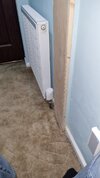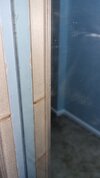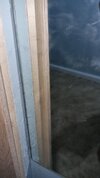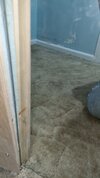Hello all
The Central Heating Pipes that come down the Wall from the Airing Cupboard Upstairs are currently in a Channel made of Two Vertical pieces of 50mm x 30mm Wood and then covered with a 6mm Plywood Sheet.
Unfortunately, when the Plywood Cover is Screwed in place it pushes against the Pipes resulting in Expansion Noise.
I would like to Remove the Two Vertical pieces of 50mm x 30mm Wood and Replace them with 50mm x 50mm Wood to give the Pipes some Clearance.
Unfortunately, when the House was Built in 1988 the Builders, seemingly, had never heard of Screws and the Wood is Nailed using Round Head Screws.
Does anyone know of the Best, and Easiest way to Remove the Nails?
I was thinking I could probably use a Small Plug Drill Bit but am not able to find any.
Any suggestions?
Thanks in advance
Kevin
The Central Heating Pipes that come down the Wall from the Airing Cupboard Upstairs are currently in a Channel made of Two Vertical pieces of 50mm x 30mm Wood and then covered with a 6mm Plywood Sheet.
Unfortunately, when the Plywood Cover is Screwed in place it pushes against the Pipes resulting in Expansion Noise.
I would like to Remove the Two Vertical pieces of 50mm x 30mm Wood and Replace them with 50mm x 50mm Wood to give the Pipes some Clearance.
Unfortunately, when the House was Built in 1988 the Builders, seemingly, had never heard of Screws and the Wood is Nailed using Round Head Screws.
Does anyone know of the Best, and Easiest way to Remove the Nails?
I was thinking I could probably use a Small Plug Drill Bit but am not able to find any.
Any suggestions?
Thanks in advance
Kevin






